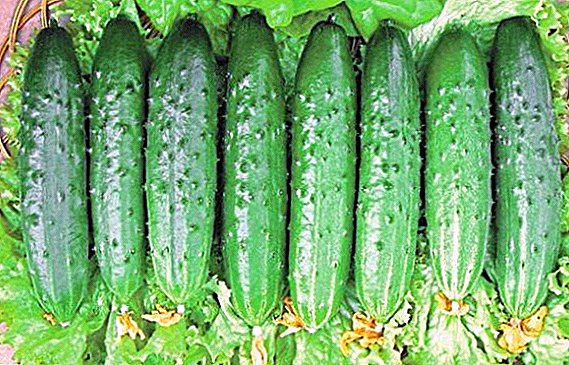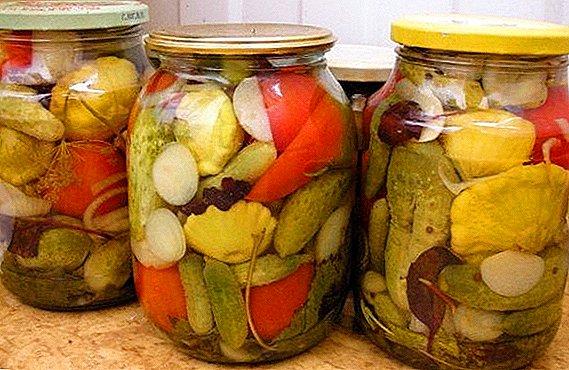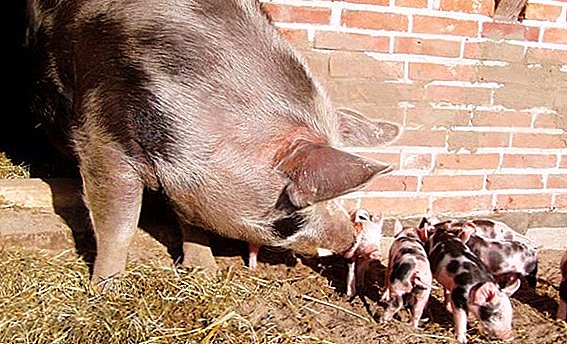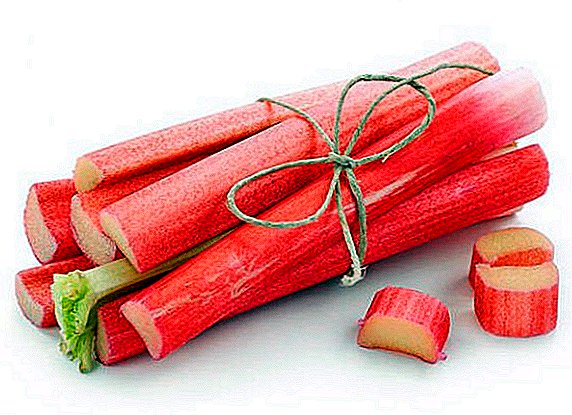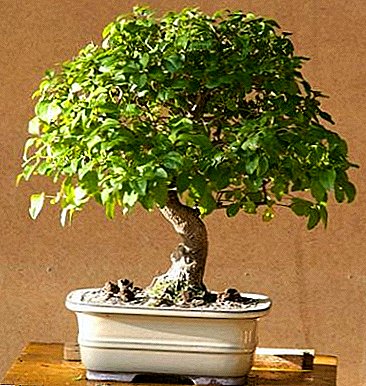
Privet: a hedge in the garden and a bonsai tree in the apartment.
Privet - deciduous or evergreen shrub, a close relative of lilac, used in single and group plantings.
It is used as a hedge. Used in indoor floriculture to create a tree in the style of bonsai.
Planting, care and reproduction of privet, a fence from it, photos - all this and not only you will find in this article.
Description and characteristics
 Privet or Ligustrum - thick, branched shrub of the olive family.
Privet or Ligustrum - thick, branched shrub of the olive family.
The plant is tall, without pruning in open ground reaches a height of 5 meters.
Leaves are leathery, oblong, lanceolate, green, in some species with a yellow or golden tint. The upper side is dark, the back is light.
With proper pruning forms dense forms. Planting privet for hedgerow used in landscape design.
In home culture is grown in the form of bonsai. In the presence of conditions of cool content from it turns a spectacular tree in the popular style.
Differs in long flowering (June August). Inflorescence racemes or paniculata, white, with a pleasant aroma. Fruits are bluish-black, spherical, formed in September.
ATTENTION! The fruits of privet (pits) are poisonous!
Features care at home and in the garden
Ligustum - unpretentious. It can be placed anywhere in the garden. Tolerates shadow and partial shade. But the most active growth and branching occurs when placed in the sun, where it blooms beautifully and abundantly.
Evergreen species are suitable for indoor maintenance. Good forms different shapes.
To your attention a photo of a hedge from a privet:





In the garden
The following conditions are necessary when planting privet and caring for it in the garden:
- landing spot - Sun or partial shade;
- soil and planting technique: terms - September-October. A pit is prepared with a drainage layer of 20 cm. The second layer is the ground with the addition of a nitroammofoski (130g / m2). The soil should have a low acidity; limestone or dolomite flour is added to it;
IMPORTANT! The seedling must take root to frost, so you can not delay with the timing!
- care: as soon as the snow melts, the soil must be plowed and mulched. At the same time carry out the introduction of mineral mixtures;
- watering: rare - 5-6 times per season, but abundant up to 40 l / m2;
- fertilizer: after spring feeding in the summer they apply organic matter. Combine with watering. Potassium is added once every three years (15g / m2);
- trimming: held in early spring. All dried, weak branches are removed, beautiful form is given. For the density of the crown apply pinching top shoots;
At home
This shrub has a flexible stem, and it can easily be given a suitable shape. In connection with this, bonsai-style trees made from privet gained popularity in indoor floriculture:
- growing place: well ventilated, cool room. In the summer you can keep on the balcony. Light access is required, but not direct sunlight. Can be kept on the north window, as the plant easily tolerates light shading. In the heat can lose the leaves, so you need to provide cool;
- soil requirements: suitable universal ready mix. An adult tree does not tolerate transplantation, therefore, it uses the method of partial replacement of the substrate every two years;
- growing temperature: the air should be cool - privet does not withstand high temperatures. But drafts and cold air from the vents are contraindicated to her;
- watering: regular, uniform, plain tap water;
- top dressing: every two weeks during growth. Used special fertilizer for bonsai. In the winter - once a month;
- formation: starts at a very early age. The most popular are vertical and bark-like styles. The procedure is carried out using wire, securing the branches in the desired position. Young shoots more than 20 centimeters in length are pruned;
- cleaning the crown and trunk: regularly remove dried and fallen leaves. Moss growing on the trunk is cleaned with a brush 2 times a year.
Transfer
 For indoor species suitable mixtures of turf and humus.
For indoor species suitable mixtures of turf and humus.
Young specimens are transplanted annually, adults do not need frequent transplantation, it is enough to do this every two to three years.
It is also possible partial replacement of the upper layer. The plant is removed from the old dishes and soaked in a bath for half an hour to clean the roots.
They are carefully unraveled, the bottom dry tips are pruned. A new drainage tank is filled in, then a small layer of earth.
Then set the plant, evenly distributing the roots. For decorative dishes are taken flat and wide. So that the plant is well kept and does not fall out of capacity, the roots are fixed with the help of wire.
It is threaded into the holes in the bottom of the pot and entangled around the roots. The tree is slightly shifted from the center. Soil ram, leaving no voids.
IMPORTANT! The roots need to quickly fall asleep, because the ligustrum does not like to be without soil.
Top landing covered with clay. It retains moisture and serves as an indicator for watering. The tree needs to be moistened as soon as the clay layer has brightened. Planted tree put in the basin and shed plenty of water, which is allowed to drain.
Further care is shaping. Unnecessary leaves are removed, and the branches in the right direction are sent using wire.
Breeding
Seed
 Seeds are extracted from ripened fruits in October. They are soaked to remove the pulp and separate the empty ones.
Seeds are extracted from ripened fruits in October. They are soaked to remove the pulp and separate the empty ones.
Float - throw out, and those settled on the bottom are stratified in cold sand at temperatures close to zero.
Sowing is done in spring in boxes or open ground. Light, fertile mixture consisting of equal parts of peat, sand and humus.
This composition is poured into the box, the surface is rammed, the seeds are pre-soaked, and they are sprinkled with a centimeter layer of sand.
ATTENTION! All seeds should be covered with sand, especially so that they are not bare when watering.
Crops are regularly moistened. Do not water them with a large jet, so as not to erode the soil. Seedlings are picked in the phase of 3-4 true leaves. Full primer of seeds becomes two years later.
Cuttings
Quick way receive full copies. Held in July. Cuttings are cut to the end of flowering. Winter lignified cuttings root poorly. Cut well-developed, new, large shoots.
Suitability of the cutting for rooting is checked on a fracture - it must produce a crunch characteristic of wood. Billets with a length of 11-12 centimeters and 1 centimeter in diameter are planted in washed sand poured in a layer of 5 centimeters on the main substrate — a mixture of turf soil and sand.
Cuttings with a cut at an acute angle, deepened by 5-6 cm. Dishes covered with glass and kept at about 250 and high humidity. After two weeks, the first roots appear, fully develop after 3 months.
Layering (overgrowth)
A way to get full copies in the shortest possible time. Sprouts or layers are formed abundantly. They should be removed in time to preserve the decorative plantings.
At the same time, when carefully digging, seedlings with the root system already laid can be obtained. The specimens obtained in this way are planted in a permanent place and grown according to general recommendations.
Diseases
 Ligustum resistant to diseases but sometimes spots of a grayish or greenish color appear on the leaves.
Ligustum resistant to diseases but sometimes spots of a grayish or greenish color appear on the leaves.
This comes from the increased acidity of the soil. To help solve the problem liming in the fall.
In the wet cool weather can get powdery mildew (white bloom) or leaf blotch (clarification of areas).
To prevent them, treatment with copper-containing preparations (Xom, Oxy) and fungicides is carried out. They are used to prevent and treat leaf curl.
This fungus is manifested in the form of thickening, redness and twisting of the leaves. They must be removed from the bush and burned, and the plant sprayed with a fungicide.
Indoor species can get sick mosaic spotting. The lesion is manifested in the form of uneven color. Carrier disease serves as aphids, so the first thing you need to protect the plant from this pest. To prevent the disease can be regular feeding and treatment with fungicides.
Pests
To the pests privet include:
- worm: affects young shoots and leaves;
- spider mite: settles on the underside of leaves, multiplies rapidly. Gnaws leaves and sucks the juice;
- aphid: covers shoots and leaves that start to wither and fall. On its sticky secretions, the fungus infecting the plant additionally develops;
- thrips: appears at high temperature and low humidity. It lives on the underside of the leaves, and on the top it appears as white dots;
- shield: during its reproduction, the leaves become covered with brown spots, wither and fall off, as the insect feeds on juices;
- weevils: amaze indoor species. Leave the edges of the leaves. Destroyed by insecticides.
A way to combat the shield is the use of Aktellik or Karbofos. The remaining pests are destroyed by Decis, Fitoverm or Inta-Vyr.
Benefit
Privet has a number of medicinal properties:
- bark - contains phenols, tannins. It is used to treat diarrhea, pneumonia, bronchitis;
- leaves - contain alkaloids, sugars, vitamin C, flavonoids, tannins. The decoction is used as part of mixtures for the treatment of angina, pharyngitis, stomatitis, female diseases;
- flowers - They have a lot of essential oils. A decoction of them is applied externally with laryngitis and stomatitis.
In addition to therapeutic use, it has a number of properties that allow it to be used for the following purposes:
- fruits, bark, leaves - color yarn, fabrics, canvases in various tones;
- wood - suitable for the manufacture of turning products and pencils.
ATTENTION! Official medicine does not recognize the healing properties of the plant. Be extremely careful when taking infusions and decoctions.
Privet for hedge
 Also use privet for hedges, which can be of various shapes.
Also use privet for hedges, which can be of various shapes.
Unlike European gardens in which it is grown to two meters, in Russia such a height will cause frost damage to the crown.
therefore height limit height of 50-70 cm. This is the optimal size for a snow blanket in the winter cold.
To create a hedge, bushes are planted at a distance of 60-70 cm. When planting a hedge, at least a meter recede from stationary buildings, for further unimpeded cutting.
Choosing a place spend digging a half bayonet shovels 60 cm wide. The pit is filled with water and filled with compost. Plants are planted and watered constantly in the first two weeks. Then the frequency is reduced. Haircut is carried out with the help of garden shears, pruner.
Types of curbs
Geometric. Bushes are cut in the form of a trapezoid with a narrowing at the top. With this pruning, the bottom of the crown is evenly illuminated. The narrowing should not be sharp, so as not to catch the eye.
The formation of the desired shape is carried out gradually, as the shrub grows. First, sticking shoots are pruned. In this way, the lateral and upper faces are formed within five to six years.
Karikomi. Such pruning is popular in Japan. Bushes shaped pillows. Several planted alongside copies are combined into one rounded flat pillow.
 Border closed form. Such edging decorative compositions used for planting flower beds inside them.
Border closed form. Such edging decorative compositions used for planting flower beds inside them.
From such compositions mini-gardens are obtained, possessing a special decorative effect.
Inside you can have ground cover perennials, annual blooming species and even coniferous gardens.
Care is watering fertilizer. On the meter meter make a bucket of humus sprinkling evenly. 10-15 grams of superphosphate are poured on the humus on top. Fertilizers are embedded in the soil.
Feeding privet, used as a hedge are necessary. They increase the decorative effect, since contribute to the intensity of color, abundant flowering, fruit formation and density of the crown. In June, it is recommended to add minerals in combination with nitrogen, and a month later - phosphorus and potassium.
At the beginning of winter, the curbs are covered with snow. In the spring, the snow is not shed waiting for gradual natural melting. It is necessary to moisten the soil. Bright, dense green of a hedge from a privet, at the correct care of it, and its magnificent flowering will become undoubted decoration of your garden.
VIDEO 1
VIDEO 2


